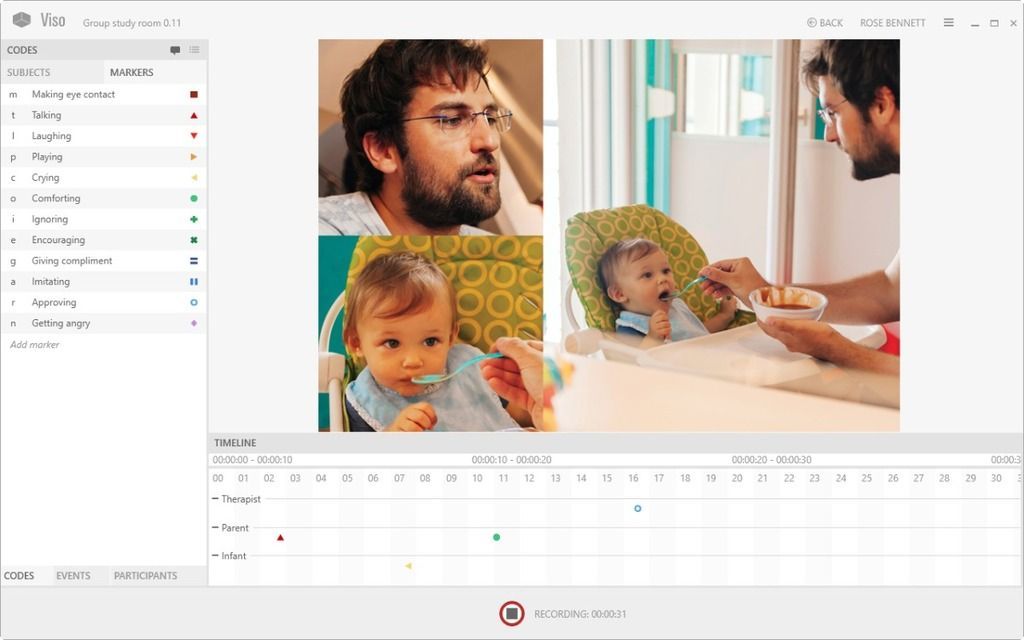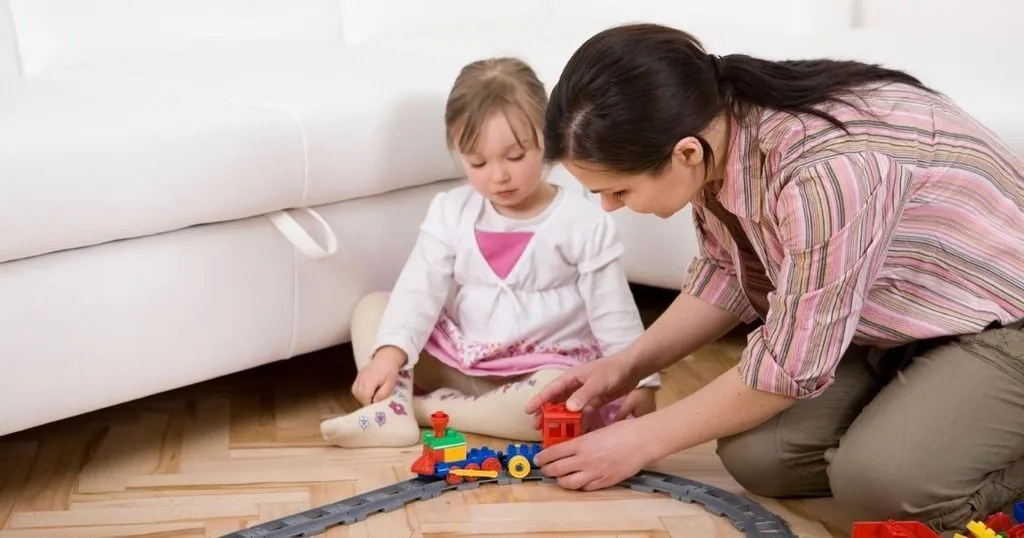How to study developmental psychology: methods, designs & tools
What should you consider when setting up a study in the field of development psychology? Read on to learn more about methods, designs & tools.
Posted by
Published on
Tue 09 Jul. 2024
Topics
| Child Development | Developmental Psychology | FaceReader | Measuring Behavior | The Observer XT | Viso | Coding Behavior | NoldusHub |

Every person goes through a development during his life. A physical development, but also a social, emotional, cognitive, and intellectual development. Researchers in developmental psychology examine the various stages of life, from baby to schoolchild, to adolescent, to adult and finally to the elderly. They look at how and why people do the things they do. Observing people’s behavior is a good method for this.
FREE TRIAL: Try The Observer XT yourself!
Request a free trial and see for yourself how easy behavioral research can be!
- Work faster
- Reduce costs
- Get better data
What is developmental psychology?
Developmental psychology is a scientific discipline that explores how individuals change and grow across their lifespan, focusing on the physical, cognitive, emotional, and social aspects of development. It examines how various factors, such as genetics, environment, and experiences, shape and influence an individual's development from infancy to adulthood.
By studying developmental processes, researchers gain insights into typical and atypical patterns of human behavior, contributing to our understanding of human development and informing interventions to support healthy development.
Studying changes across the lifespan
Not only the observable actions are studied, but also how people perceive themselves and the world, how they think and fantasize and which feelings and desires they experience. Moreover, it is not only about the development of an individual researchers look at, but also about the development of interactions between people and about the development of relationships and groups.
The knowledge that arises from these studies can make a difference in areas such as youth health care, education, in policy formulation, or it can contribute to solutions for societal challenges. After all, while most people follow common patterns in their development, others reach developmental milestones at a different pace. Research in developmental psychology is designed to help all people reach their full potential.
Research methods to study developmental psychology
Besides behavioral observation, as mentioned above, there are other additional ways to scrutinize the development of humans and answer your research questions. For example, think of:
- Controlled experiments, such as the Still Face Experiment or Piaget’s conservation tasks
- In-depth interviews
- Self-reports or surveys, such as the Social Skills Questionnaire (SSQ) or the Minnesota Multiphasic Personality Inventory (MMPI)
- Correlational studies
- Archival research
Since developmental psychology is all about time and how things change over the course of life, it is important to combine the above mentioned methods with a longitudinal or cross-sectional research design. For example, you can conduct a longitudinal experiment or a cross-sectional survey.
See more research examples of Developmental Psychology.
Longitudinal versus cross-sectional research design
The main idea behind longitudinal research is that you take one group of people – all of the same age – and study them over some period of time. This could be weeks, months, or even years. §This way, you can investigate changes in individuals over time by comparing one person’s data at several moments in time.
It brings you in-depth data and a high internal validity. The disadvantages are that this is very time-consuming and the chance that participants drop out is high.
Instead, you can do a cross-sectional study. In this case, you compare groups of people of different ages at one point of time. This is a much quicker way of doing research, you get fast results, and you do not have to worry about people dropping out.
However, it is possible that cohort effects will appear. The differences found in one group may be caused by age, or because people in a particular group grew up under different circumstances or were exposed to different influences.
Equipment available for developmental psychology research
There is quite a few equipment available to gather data in the best possible way. Things to consider when you set up a study for answering your research questions are for example:
1. Do you want to go on site to gather data, use an online tool, or is a laboratory setting more suitable?
A perfect solution for the first option is to use a portable lab. This way, all equipment needed is packed in a suitcase, which you can carry around, put in the back of your car, or even take with you on a plane trip. It is easy to set up and enables you to gather data from participants while they behave in their natural environment, such as their own home.
If you want to engage a large number of participants located all over the world, FaceReader Online can help you collect data about their facial expressions. This online tool allows you to capture participants' responses to websites or videos and easily see which element triggers the desired responses – such as joy, interest, or arousal. In addition, with the integrated EyeReader, eye tracking analysis with a regular webcam is available as well.
To be able to control all kind of settings or circumstances for your experiment or if you need a lot of additional hardware to measure your data with and you do not want to be dragging all this stuff back and forth, a stationary observation lab is more suitable.
It can be equipped with cameras, microphones, a one-way mirror to observe participants unobtrusively, data acquisition systems, eye-trackers, and much more. All the equipment is built in and integrates nicely, making it a smoothly running lab.
BUYER'S GUIDE: Choose the perfect audiovisual lab
Learn exactly what you need to consider for your AV lab.
- Best options for your AV lab
- Practical considerations & tips
- Get the most out of your setup
However, building a lab is not just about the hardware, you also need software to facilitate your data collection. To choose which software fits best, something to consider is:
2. Will your dataset mostly exist of qualitative or quantitative data?
A software system such as Viso is particularly suitable to gather qualitative data. This audio and video recording system enables you to control multiple cameras from different angles and to zoom in on certain situations.
In the picture below, you can see an example. One camera is pointed at the parent’s face, the second on the child, and the third one on both parent and child, providing an overview of the situation.

Besides, in Viso you can predefine relevant behaviors you want to study and annotate these during or after your observations or recording sessions. You can play back the recorded sessions immediately afterwards, without any downtime.
If you want to add other measurement tools to your observations to enrich your data on (unconscious) behavior, NoldusHub will fit perfectly. It simplifies the process of calibration and starting several acquisition tools to collect data such as facial expressions, gaze, skin conductance, and heart rate, all at the same time. From setting up to connecting all your devices, to recording and visualizing results in a clear way, NoldusHub makes multimodal research easy.
To be able to analyze your data quantitatively, you need a software tool such as The Observer XT. This is a manual event recorder for detailed annotations and analysis. With use of more detailed coding schemes, you can create a log of annotated behaviors, thus providing insight on length and frequency of the behavior and then analyze these behaviors in a descriptive or numerical way. The analysis options make The Observer XT a unique tool.
Also read: how to make coding behavioral data more fun.
To finish, there is a third important element that you should take into account in your study setup and choice of equipment:
3. Are your participants able to describe their feelings in spoken words?
If your research includes children, especially babies, they may not be able to let you know how they feel or what there are thinking by putting it into words or answering a survey question. §To be able to measure some of these feelings and emotions in another way, you can assess their non-verbal behavior.
A quantitative tool to measure non-verbal behavior from facial expressions is for example FaceReader. Based on Action Units in the face, FaceReader determines six basic emotions, as well as valence and arousal. Especially for infants ranging in age from 6 to 24 months old, Baby FaceReader is available.
Put it all together in one clear overview
There are many ways to conduct your research in developmental psychology and available tools to support you in this. In order to put everything together in an orderly manner, we have developed an informative pdf. Check it out at your convenience: Innovative solutions for psychology research.
References
- Webinar ‘Research in Developmental Psychology’: https://noldus.com/webinars#developmentalpsychology
- Still Face Experiment: https://www.youtube.com/watch?v=apzXGEbZht0
- Piaget’s conservation tasks: https://www.youtube.com/watch?v=gnArvcWaH6I
- Research methods in developmental psychology: https://www.youtube.com/watch?v=P3sWPGMg-9U
- Theories of Development: Research Methods: https://www.youtube.com/watch?v=F_HTEYwa0UI
- Must-reads on psychology and behavioral coding
Related Posts

Examples of infant behavior research experiments

Using observational research to capture parent-child interaction
